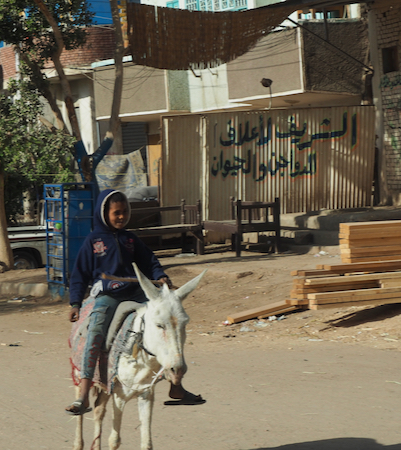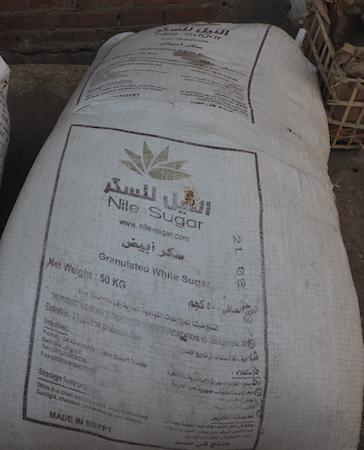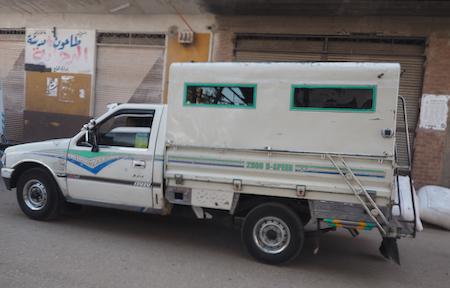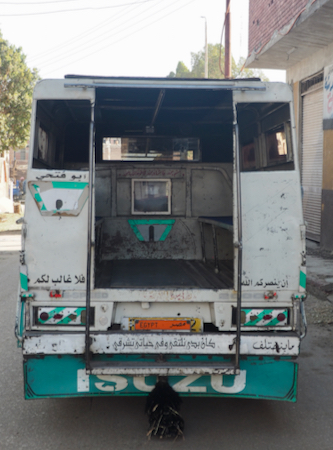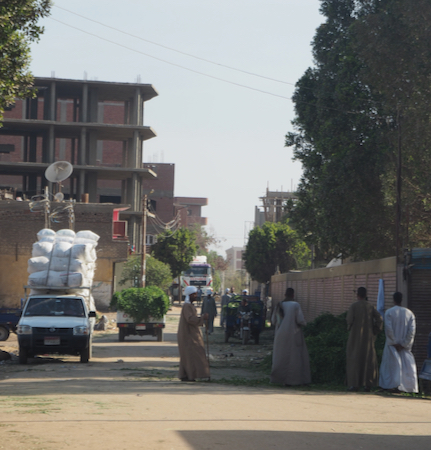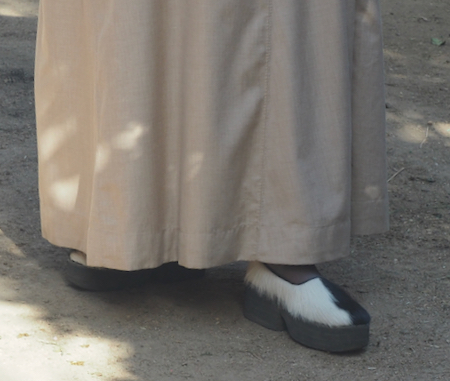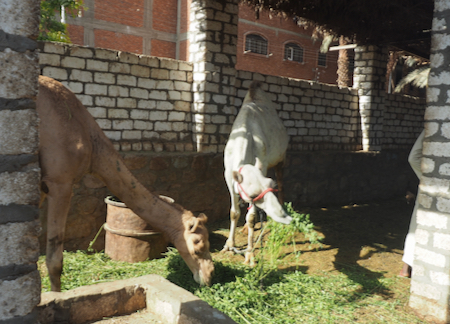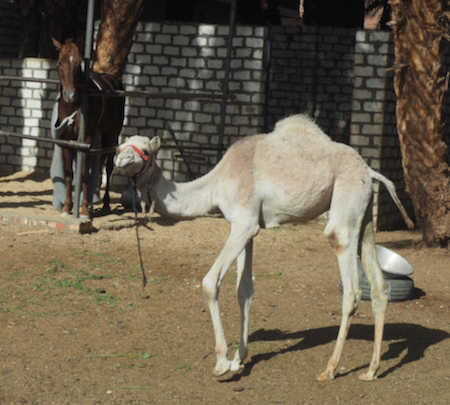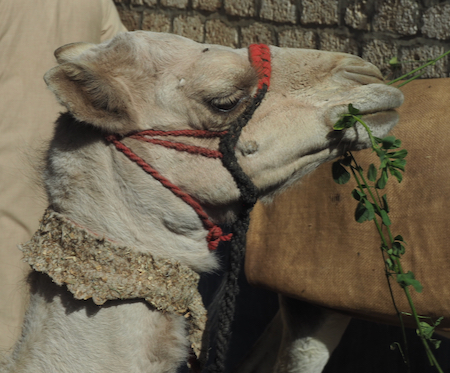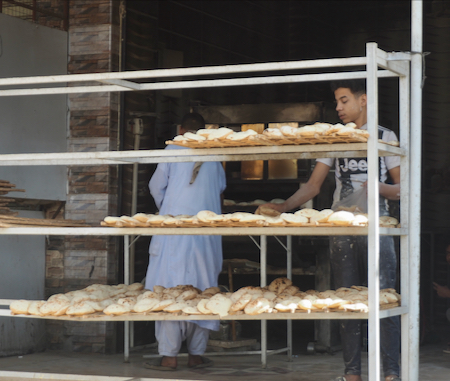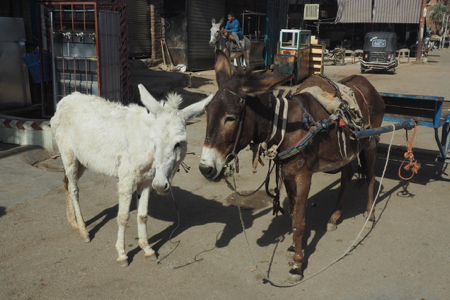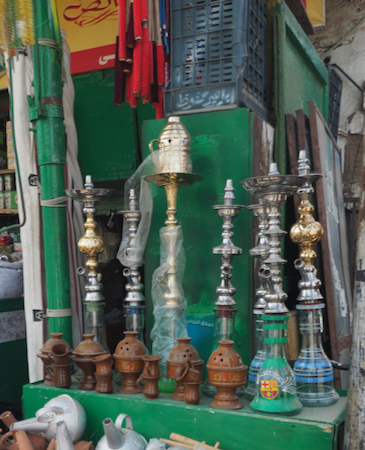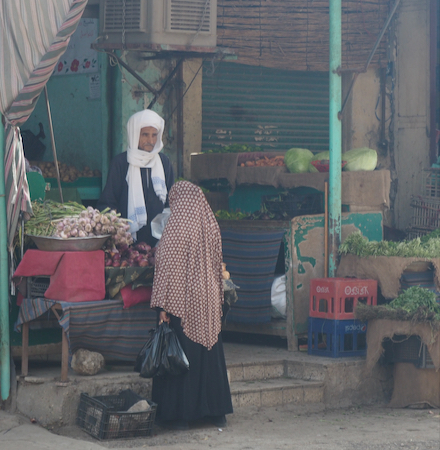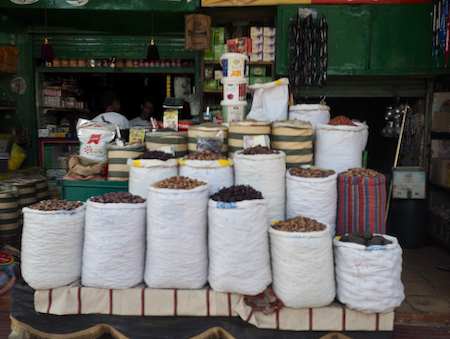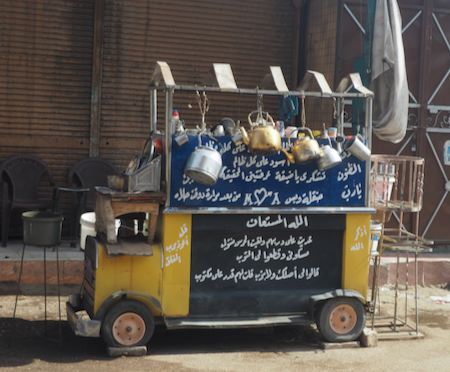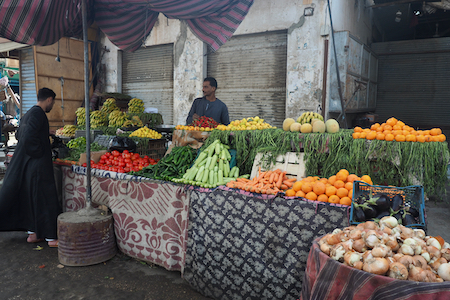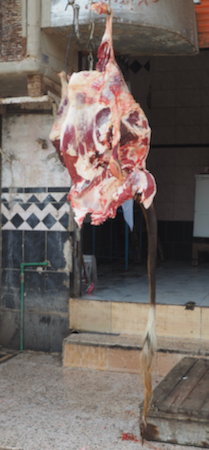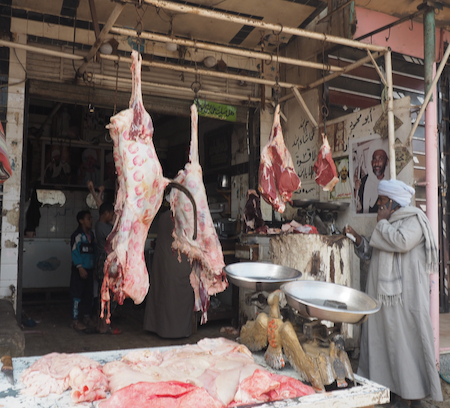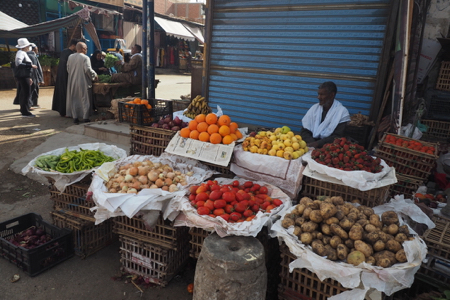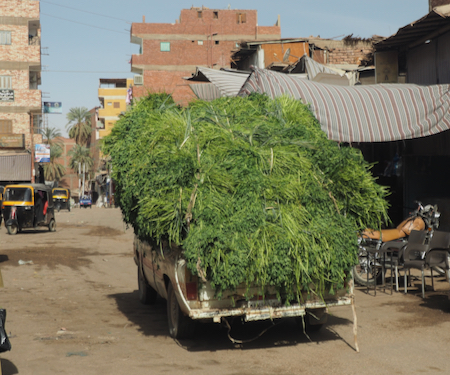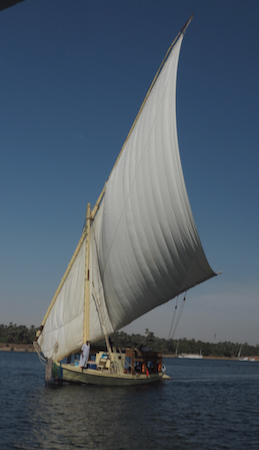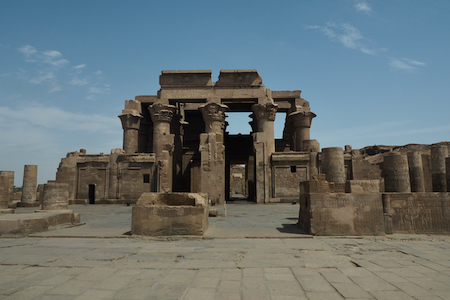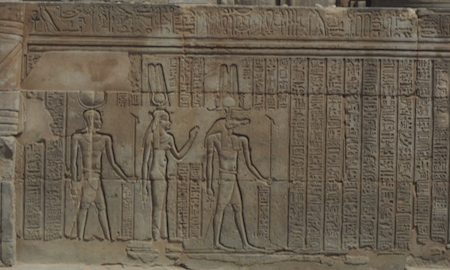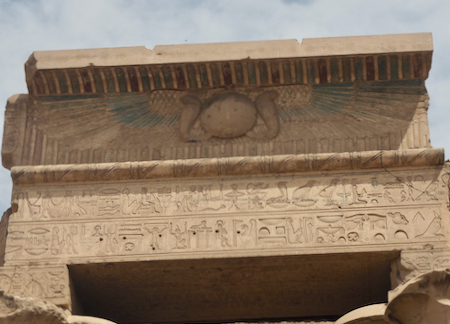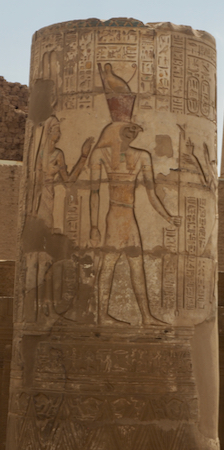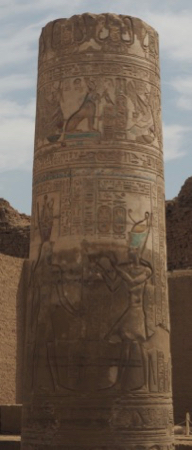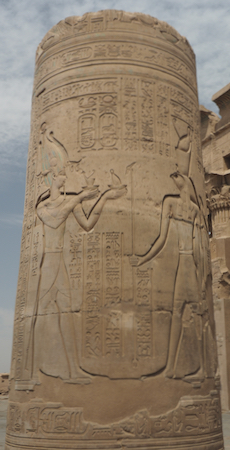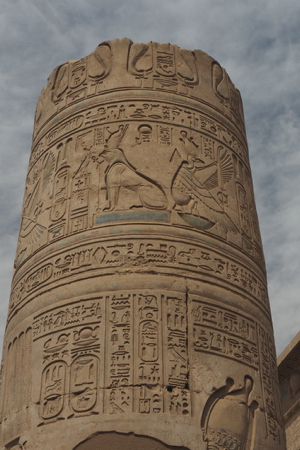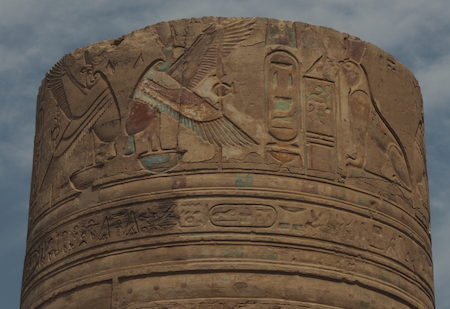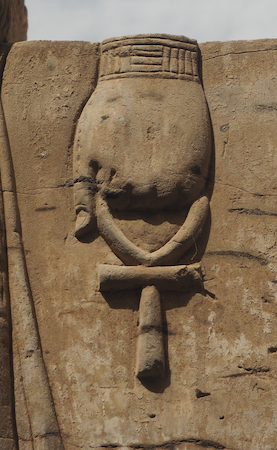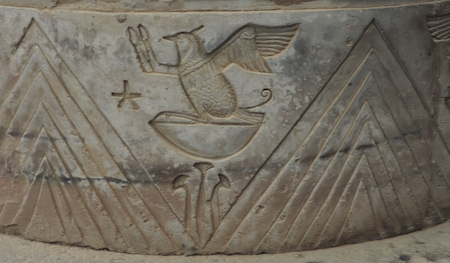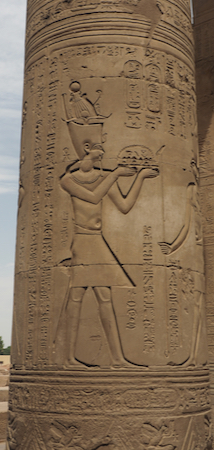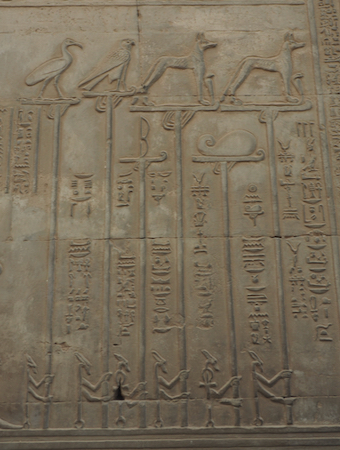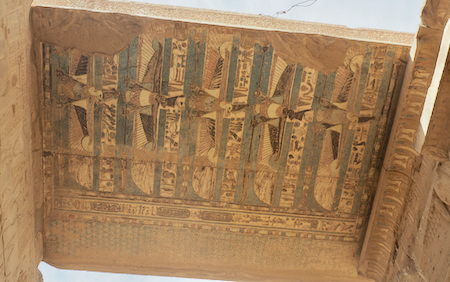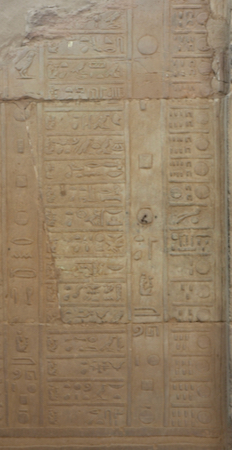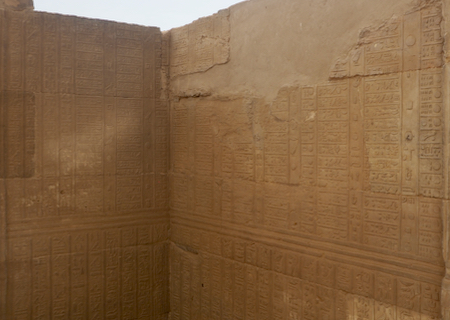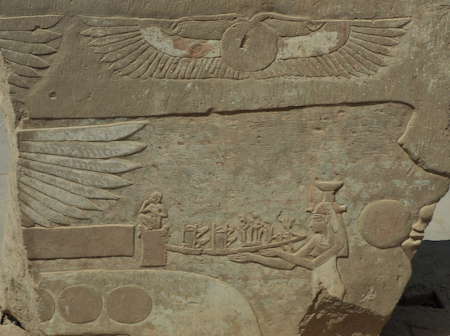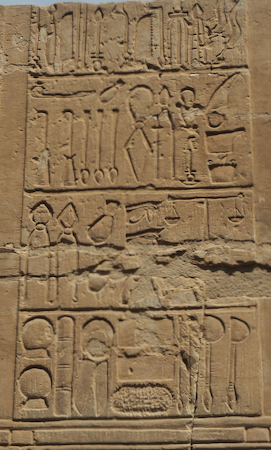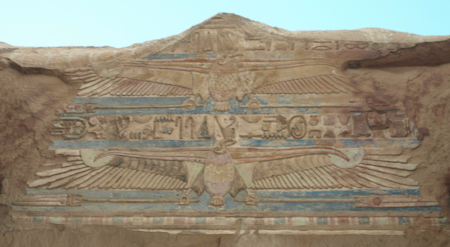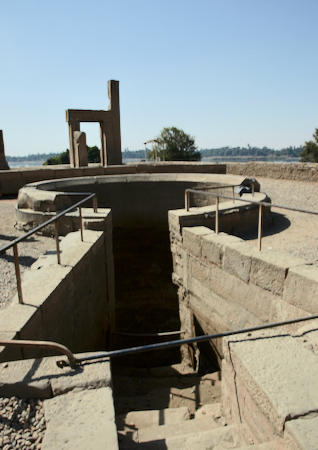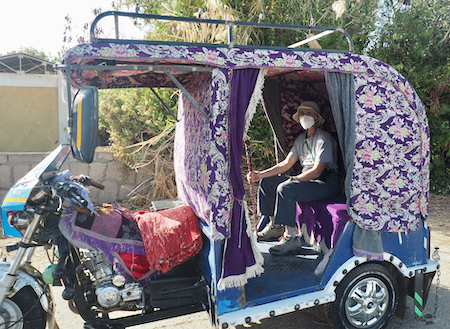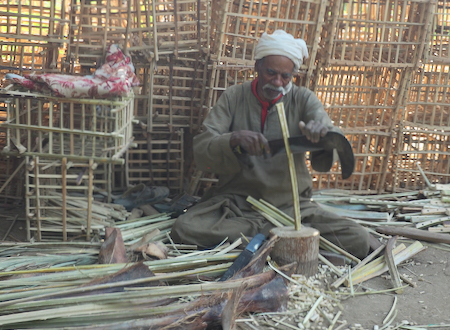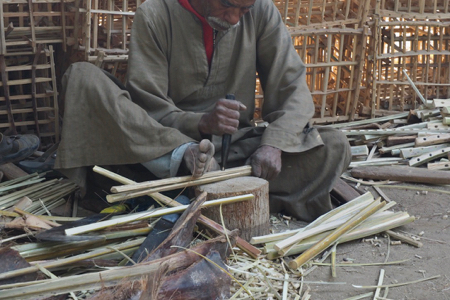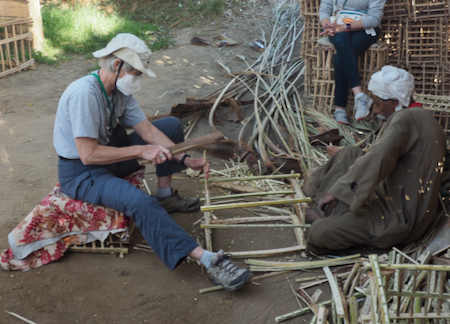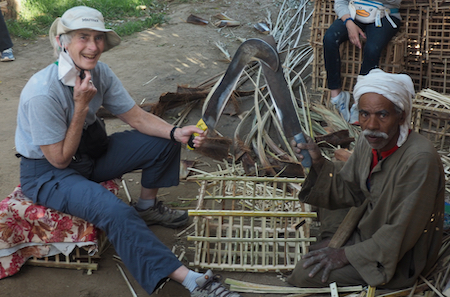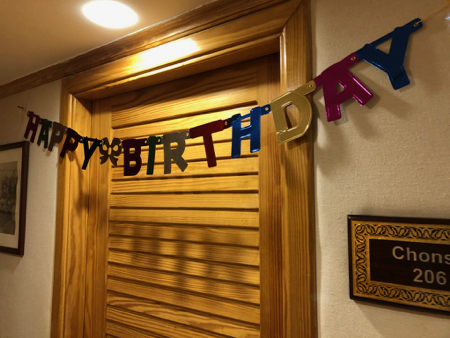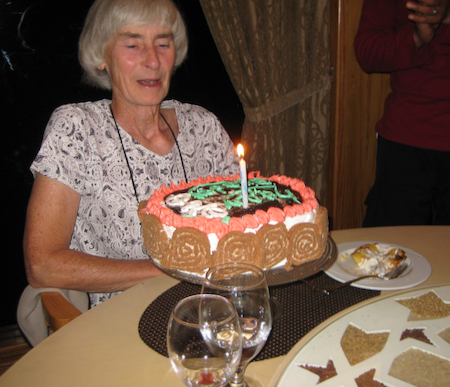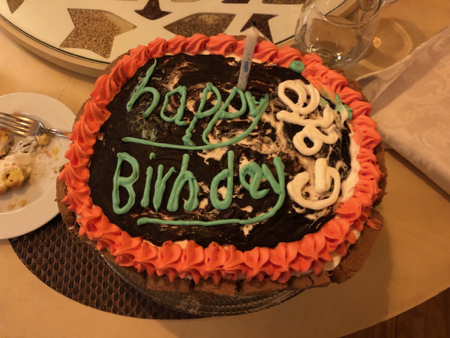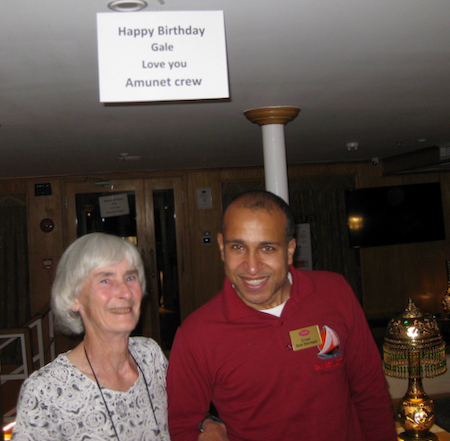Fri., 3/4/22 - Village of Daraw - Temple of Kom Ombo - Village of Fares - Happy Birthday, Gale
Coffee in bed for the birthday girl.
At 8 AM we boarded a motor boat for a ride across to the east bank of the Nile and got into the back of two pick-up trucks for a short, rough ride to the village of Daraw. There we visited a livestock trader. He had two female camels, a three-month-old baby camel, one cow, several shaved donkeys (shaved for “health reasons”), one race horse, and a bunch of sheep and goats. He basically trades the animals for goods. His camels were not “Class A.” Class A female camels can produce 40 liters of milk when milked twice a day. Camel milk is healthy and a cure-all for many ailments. These camels only give two or three liters a day.
Typical mode of transport
Sugar cane product of the Nile Valley
Our transport to and from the dahabeya
Fancy seating
Street scene in Daraw
Our host's fancy shoes
At the farm
Looks yummy
After walking around the farm yard, we walked to the local market. As usual, my camera loved it! Lots of pictures of fruits and vegetables, spices (mostly tamarind, dates, and hibiscus), camel butchery, and street scenes.
Bakery
Local transport
Water pipes
Merchant and customer
Looks like nuts or dates
Tea wagon
Veggies
Butchered camel carcass - you can tell because the tail was left on
Butcher shop
Loaded truck - can't tell what he is hauling
After the village visit, the Amunet sailed a short way downstream to Kom Ombo, which means Hill of Gold, to visit the Temple of Kom Ombo.
Since crocodiles once laid their eggs here on a curve of the Nile, the temple was designed as a double temple to be dedicated to two gods: One side to Sobek, the crocodile god and a twin half of the temple to Horus, the falcon god. The Temple was constructed during the Ptolemaic dynasty, 180-47 BCE.
This temple has some spectacular reliefs on its walls and columns and many images retain their original colors. I will identify what I can.
Falucca under sail
Entrance to the Temple of Kom Ombo
Amun Ra, Hathor, and Sobek the Crocodile God
Winged sun disk flanked on either side by a uraeus - cobra
Horus
Pharaoh (on right-lower) making an offering to a god/goddess
The Ankh - for eternal life
Ptolemy VI Philometor making an offering to the gods of the temple
Part of a calendar
Ceiling
Calendar
Temple calendar
The year is broken into three four-month periods - for time of flood, time to seed, and time to harvest. There are five days at the end for celebration when the temple is open to common people.
A healing center is attached behind the temple and one wall of the temple has illustrations of the surgical instruments used in mummification.
Vultures against blue background on ceiling, representing the sky
Deep well with stairs spiraling down. It was used to measure the height of the Nile floods and the heights were recorded on the temple walls.
After lunch we got off the boat at Fares Island and rode Tuktuks through the village to watch a man make crates for shipping mangos. One crate holds 44 pounds of mangos. He makes 20 crates a day and sells them for about $1 per crate. They are made from the stems of palm leaves. Several members of the group took turns “helping” him assemble a crate.
Gale in our lovely purple Tuktuk
Making crates from the stems of palm leaves
Feet come in handy
Gale making a crate
After dinner tonight the crew of nine men sang to Gale accompanied by two drums, a bongo, and a tambourine. The crew also taped 10 "Happy Birthday Gale" signs around the lounge and hallway to our room. It was an event she will not soon forget.
No, she didn't blow it out - just snuffed it with her fingers
The cake was very good!
Gale with boat manager Emad - the signs were up all over the boat
| Return to Top | Return to Itinerary | Return to Trips page to view other trips | Return to Dreamcatcher Home Page |
